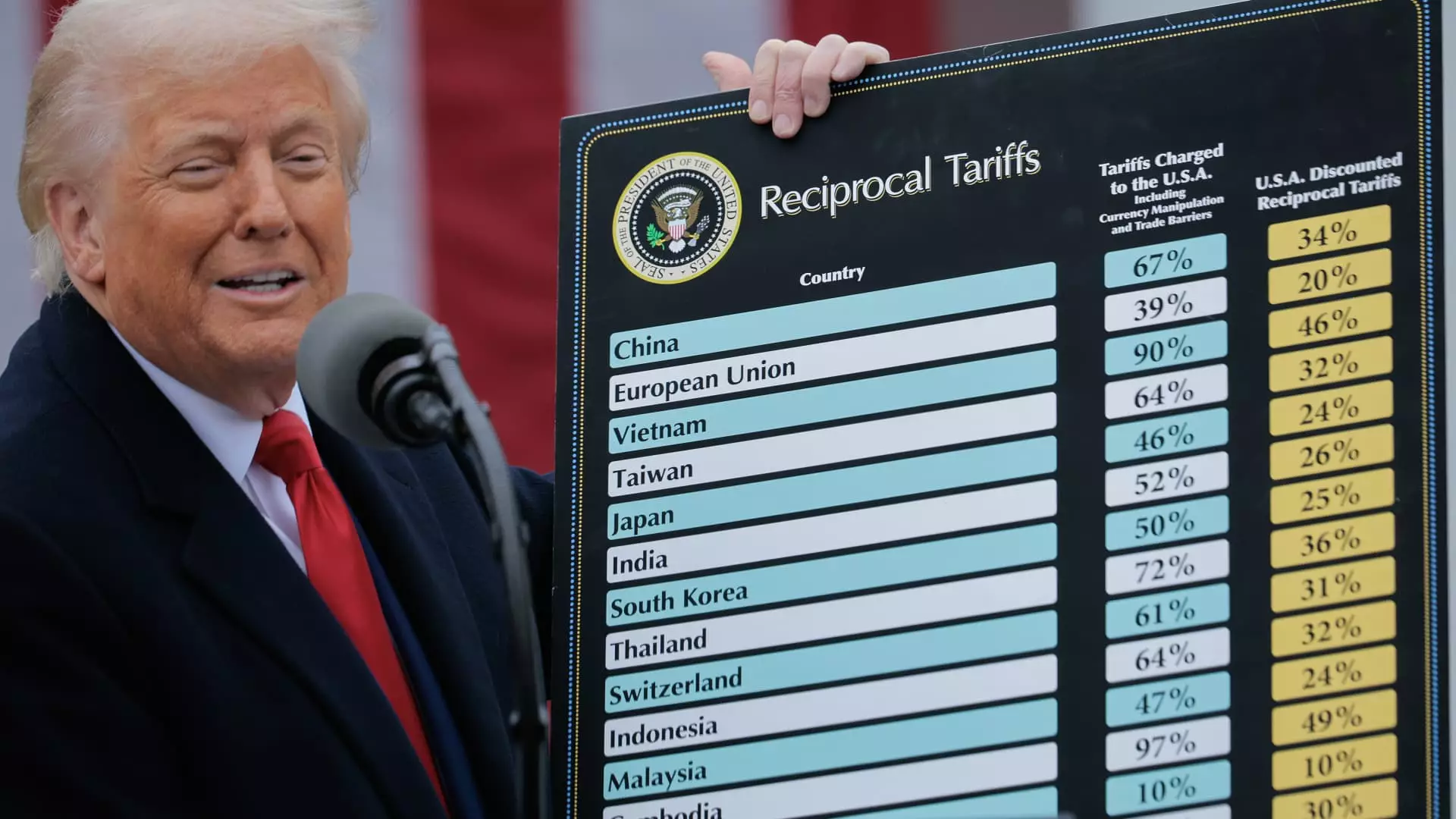When President Donald Trump unveiled his “reciprocal” tariff policy, he wielded numbers that seemed more like a magic trick than sound economic policy. Announcing a baseline 10% tariff on nearly every country, while subjecting key trade partners like China, Vietnam, and Taiwan to much higher rates, he left economists and trade partners scratching their heads. The rationale presented was clear: retaliate against nations that charge exorbitant tariffs on U.S. goods. However, this was less about fair trade and more an exercise in political theatre, one that poses real dangers to America’s economic health.
The Distortion of Reality in Tariff Calculations
At a Rose Garden ceremony, Trump proudly displayed a poster board outlining proposed tariffs, underscoring the so-called “discounts” America would offer compared to the alleged rates charged by others. For example, the administration claimed that China slapped a staggering 67% tariff on U.S. goods while proposing a countervailing 34%. Yet, a report from the Cato Institute, which provides a far more credible analysis based on World Trade Organization data, revealed this figure to be closer to a mere 3%. This staggering disparity raises critical questions: Are these deceptive figures merely gaffes, or do they stem from a deeper ignorance of how global trade works?
The flaws in Trump’s calculations seem systematic. The methodology appears to be calculated by dividing the trade deficit by the value of imports from each country—ignoring the complex web of services that contributes significantly to the economy. This glaring oversight points to an alarming trend of relying on simplified, if not entirely false, narratives to justify aggressive policies.
A Dangerous Premise with Real Consequences
Utilizing flawed data and a simplistic equation may serve to satiate a political base hungry for action against perceived injustices in trade. Still, it does a disservice to the complexities that form the foundation of global economics. By fostering mistrust among trading partners, this “reciprocal” policy threatens to ignite retaliatory measures that could spiral into full-fledged trade wars. Such outcomes risk stunting economic growth on both sides, serving neither American interests nor the interests of our partners.
Moreover, these sweeping tariffs fail to consider the broader implications of a disconnected corporate landscape. U.S. manufacturers and exporters are not operating in a vacuum; they depend on intricate international supply chains that can be disrupted by sudden, unilateral tariff enactments. The ramifications are not mere academic musings but translate directly into increased costs for consumers and businesses alike.
Negotiation Through Bluster: An Unsustainable Strategy
The “reciprocal” tariff strategy embodies a broader, troubling trend in Trump’s administration: a combative approach to international relationships that prioritizes immediate political gains over sustainable economic practices. This short-sightedness disregards nuanced discussions in favor of grandstanding, a tactic that ultimately undermines long-term stability. Tariffs, rather than working as protective shields, risk becoming blunt instruments that can inflict significant collateral damage across the economy.
In the intricate dance of global trade, the approach adopted by Trump’s administration represents a breakaway from traditional negotiations based on mutual understanding and respect. If America wishes to assert itself as a leader on the global stage, it cannot afford to navigate these waters with a reckless disregard for economic realities. Instead of entering into partnerships based on dialogue, this administration has chosen the route of rivalry, setting a dangerous precedent for future governance.

